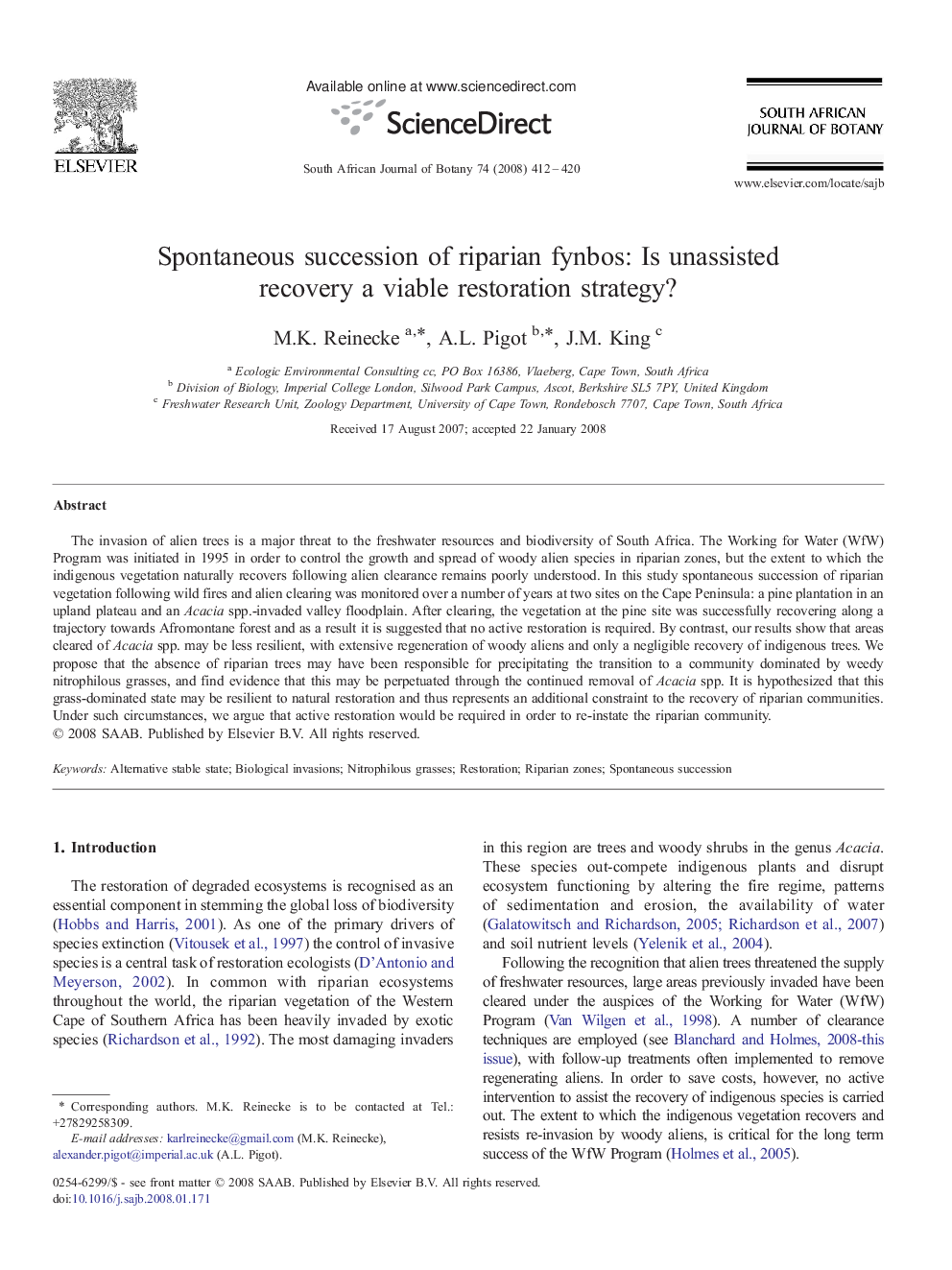| Article ID | Journal | Published Year | Pages | File Type |
|---|---|---|---|---|
| 4521486 | South African Journal of Botany | 2008 | 9 Pages |
The invasion of alien trees is a major threat to the freshwater resources and biodiversity of South Africa. The Working for Water (WfW) Program was initiated in 1995 in order to control the growth and spread of woody alien species in riparian zones, but the extent to which the indigenous vegetation naturally recovers following alien clearance remains poorly understood. In this study spontaneous succession of riparian vegetation following wild fires and alien clearing was monitored over a number of years at two sites on the Cape Peninsula: a pine plantation in an upland plateau and an Acacia spp.-invaded valley floodplain. After clearing, the vegetation at the pine site was successfully recovering along a trajectory towards Afromontane forest and as a result it is suggested that no active restoration is required. By contrast, our results show that areas cleared of Acacia spp. may be less resilient, with extensive regeneration of woody aliens and only a negligible recovery of indigenous trees. We propose that the absence of riparian trees may have been responsible for precipitating the transition to a community dominated by weedy nitrophilous grasses, and find evidence that this may be perpetuated through the continued removal of Acacia spp. It is hypothesized that this grass-dominated state may be resilient to natural restoration and thus represents an additional constraint to the recovery of riparian communities. Under such circumstances, we argue that active restoration would be required in order to re-instate the riparian community.
